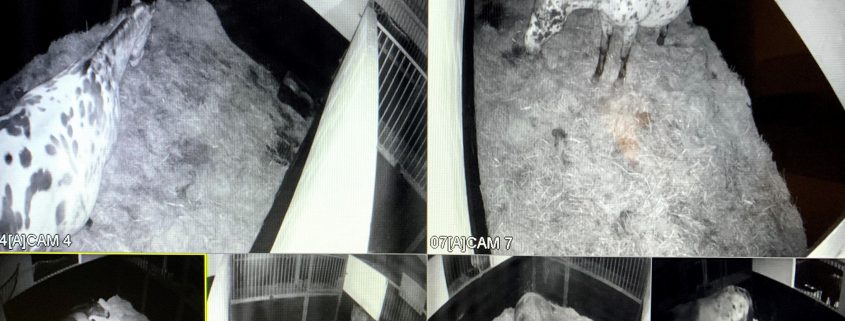The Class of 2021 – FOUR WEEKS PRIOR TO FOALING
In conjunction with Farm & Stable Supplies for supporting the Appaloosa Horse Club (ApHC) UK 2021 Photo Competition. Thank you 🙂
Let us go back to November 2019 when we stabled our 5 mares through the winter months under at least 11 hours of artificial light, come early February 2020, our mares were cycling and obviously in season. We collected semen from our stallion and artificially inseminated the mares.
At their 14–16-day scan, the Vet was able to confirm the mares were pregnant and by the size of the embryo’s we could work out what date the mares ovulated. From this date, we worked out the estimated date of their foaling due dates.
From the time of conception, the mares lived a normal life out in the field within the herd. During the third trimester of pregnancy, foals do the majority of their growing, so we start the mares on a little stud mix and gradually build up the quantity.
With one month to go, the mares are introduced into a new routine, being stabled each night, each mare has her own stable, this enables her body to build up immunity to her new surroundings which are passed onto the foal. The mares are dewormed, have a Flu and tetanus vaccine and the last trim from the farrier prior to foaling, all are routine for us and all for the benefit of the mares and foals as we start our new evening TV show… Foal Watch.
We are now prepared, if there is anything missing from our foaling kit, it is sleep! No matter if this is your first foaling or your 100th, you do not want to miss it…the thought of creating a life and not being prepared to take accountability for any complications that might occur is something we take very seriously.
Counting down the days, we observe their udders and vulvas at 6am and 6pm, these are key to all the signs of imminent foaling. As the week approaches to each due date, we take note of the loss of appetite for hay, they have adlib hay and as soon as this becomes bedding, we know things are starting to progress. As we increase their hard feed, we introduce a sloppy grass mash with salt, this ensures they drink plenty of water to prevent their droppings change to a firmer texture.
As we watch their evening stable TV routine show, we note their behaviour, we like to say it is a “textbook” foaling but never have we witnesses two foaling’s the same, not even from the same mare. Every mare has a different pain threshold, but the fact remains they all must go through the same process with or without those obvious signs they are supposed to show us…
Here is a little video of our 5 mares:

